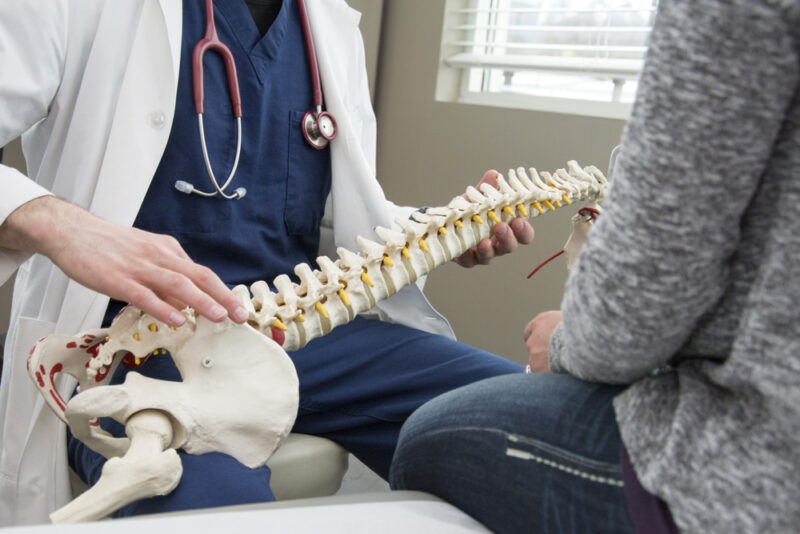Adjacent segment disease is a spinal disorder that may occur after spinal fusion, this is known as segmentation-related ASD. ASD is commonly associated with spinal fusion, however, it can also be caused by natural degeneration that occurs in the spine as a result of aging. ASD is also a broad term that includes many complications of spinal fusion including spondylolisthesis, instability, herniated nucleus pulposus, stenosis, hypertrophic facet arthritis, scoliosis, and vertebral compression fractures.
Fusion surgery serves to connect or “lock” two or more bones together, preventing natural movement. Degenerative changes can develop in the intervertebral discs and joints, above or below the level where the previous surgery was performed. As a result of these complications, ASD can cause you to feel pain in your lower back or neck, pain that radiates into other parts of the body, and neurological symptoms such as tingling, numbness, or weakness.
Why Does Adjacent Segment Disease Develop?
Adjacent segment disease has two primary causes. The spine undergoes a natural degenerative process. As we age, the discs in the spine dry out and the disc spaces gradually “collapse” and lose their normal height. Because the flexible spine functions like links in a chain, a weakness in one link transfers extra stress to the next link. This stress can cause symptoms when bones are misaligned, nerves are compressed, or the spine becomes unstable.
Bone fusion is believed to accelerate degeneration by increasing tension and motion above and below the level of fusion. However, not everyone who undergoes spinal fusion develops ASD, and not all spinal fusions are the same. Minimally invasive techniques that disrupt the less supporting muscles and ligaments of the spine have the potential to reduce a patient’s risk of adjacent segment disease. Furthermore, careful optimization of spinal alignment during fusion appears to be critical to minimize ASD risk.
How Can You Prevent Adjacent Segment Disease?
The risk of developing ASD after fusion surgery depends on the original spinal problem, your age and bone health, and the number of planes fused. There are steps you can take to minimize your risk of developing ASD. One modifiable risk factor that patients do before and after surgery is weight. Patients who are overweight or obese generally have a higher risk of complications but are also more likely to develop adjacent segment disease. This is due to the increased weight the spine must support. Additional weight leads to increased loads on adjacent layers that accelerate the degradation process.
Another way you can reduce your risk of developing ASD is by avoiding nicotine products. The use of tobacco or vaping products containing nicotine is another risk factor that accelerates the degenerative process throughout the spine and may increase the risk of disease in adjacent segments. Patients who smoke or vape should stop smoking before surgery to maximize healing and ensure successful fusion. For the continued health of the spine and overall health, they should remain smoke-free indefinitely.
What Are Available Treatments for Adjacent Segment Disease?
Treatment of adjacent segment disease is similar to most spinal disorders. Conservative nonsurgical measures such as exercise, physical therapy, and epidural steroid injections are treatment options. When these interventions do not bring lasting relief a second surgery is required. We target the level of symptoms using the most effective and minimally invasive methods.
Modern procedures that treat various spinal conditions also reduce the risk of ASD. For instance, artificial disc replacement has shown promise as a surgical alternative for the cervical spine. The device maintains the motion of the fusion plane and prevents adjacent segment disease by creating less stress on the adjacent plane than in fusion. However, not all patients are viable candidates for disc replacement.
Integrative spine care surgeon Rafael Levin and his team at Comprehensive Spine Care in Westwood, NJ, remind patients that surgery is about getting them back to doing the things they love doing in life as quickly as possible. If you are suffering from a spinal condition or experiencing back or neck pain contact our office by calling 201-634-9170.










